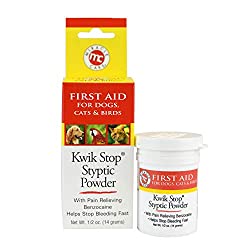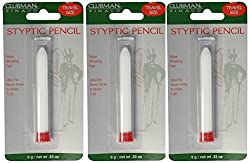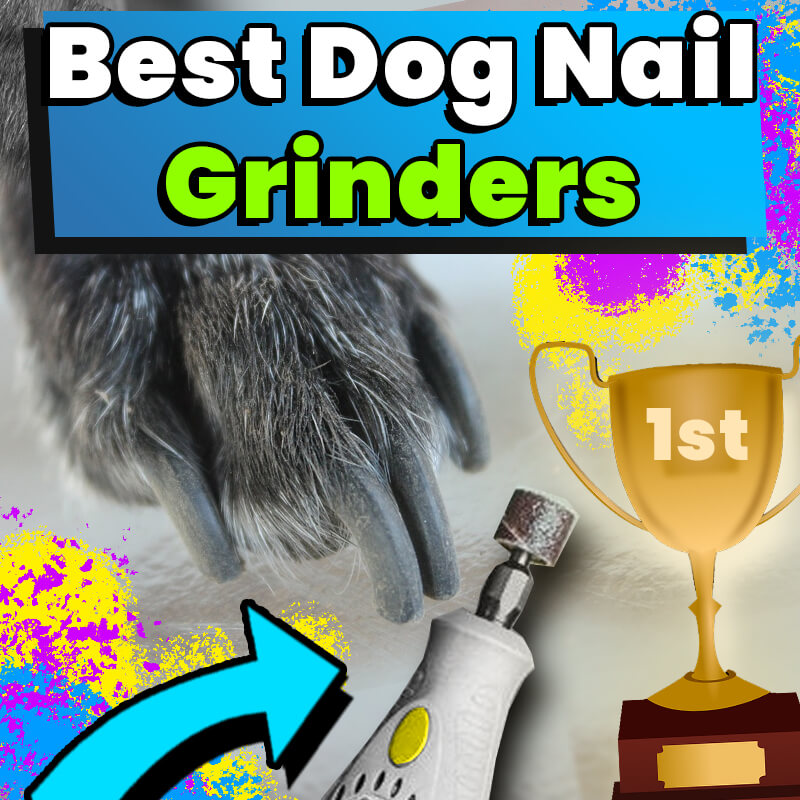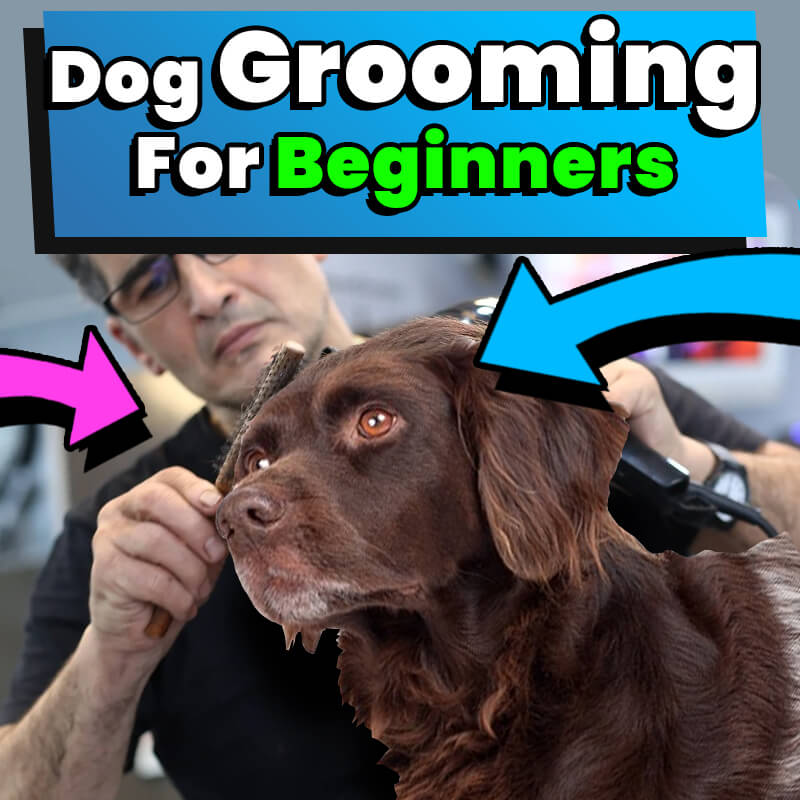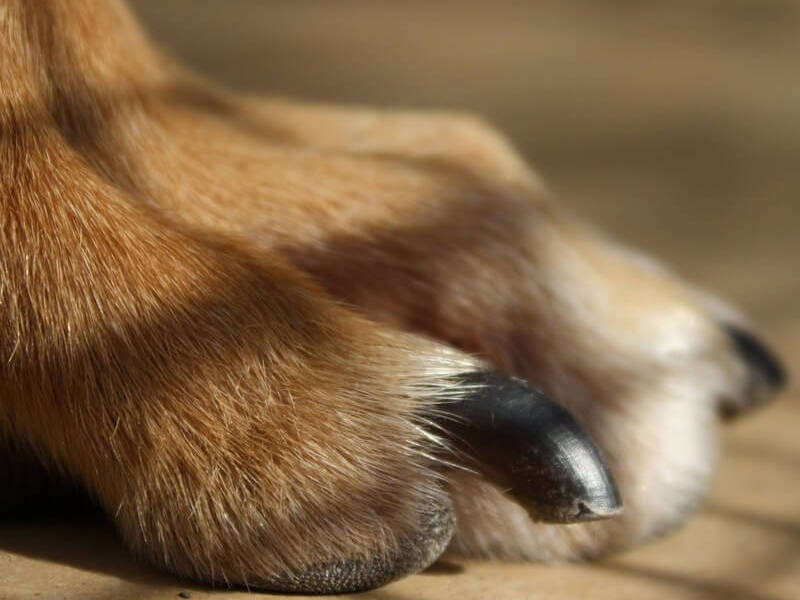
Many dog owners dread trimming their dog’s nails. It can be a stressful and daunting experience for both the pet owners and their furry friends. There is the fear of trimming too far into the nail and cutting the quick.
The task seems simple but even experienced home groomers have accidentally cut the quick and cause dog nail bleeding. It’s easy to accidentally cut a dog’s nails too short, especially if your dog’s nails are black or dark in color.
How to stop a dog’s nail from bleeding? We will discuss six easy ways to stop a dog’s nails from bleeding: from using styptic powder or styptic pencils to natural remedies and the good old bandages! Let’s go over each one in detail.
Keep in mind that trimming your dog’s nails is a necessary part of dog grooming and it’s important to trim frequently – usually every two to four weeks.
Table of Contents
1. Styptic Powder for Dogs
A popular method to control bleeding after trimming into the quick is to use styptic powder. The styptic powder works quickly to stop the bleeding because it contains an ingredient called ferric subsulfate.
The ferric subsulfate is a hemostatic agent that contracts the blood vessels thereby clotting the blood flow and within a couple of minutes, the bleeding will stop.
Additionally, the styptic powder also acts as a pain reliever because it contains Benzocaine that works like a topical anesthetic.
Many veterinarians and professional pet groomers use the Kwik Stop styptic powder to control dog nail bleeding.
If you accidentally clip into the quick, pour the powder into the cap and lightly press your dog’s nail into it. Keep the nail in there for a minute. Have your dog stay as still as possible. The bleeding will stop after a minute. Wash the cap thoroughly for next use.
2. Styptic Pencils
The styptic pencils are similar to styptic powders.
What are styptic pencils made of? Styptic pencils contain silver nitrate. Many veterinarians and professional pet groomers avoid using styptic pencils because the silver nitrate sting on contact. However, styptic pencils are effective at stopping your dog’s nail from bleeding.
How do styptic pencils work? To use the styptic pencil, wet the tip of the pencil with water. Then apply the tip of the pencil to the affected nail and quick which should stop the bleeding. Hold the pencil firmly on the affected nail for a few minutes. After, rinse the blood off the pencil tip.
A styptic pencil is also a great choice if your pet has light cuts on their skin. The styptic pencil also contains an ingredient called aluminum sulfate that helps to stop the bleeding and quickly seal the skin surface. This will prevent dirt or germs from getting beneath the skin.
3. Natural Remedies: Baking Soda and Cornstarch or Flour
A lot of dog owners prefer to go the natural remedy route. Fortunately, there are a few products you can easily find around your house that mimic the effects of the styptic powder including baking powder, baking soda, cornstarch, or flour.
These natural ingredients are completely safe for your dog. There’s two ways you can apply this.
The first way is to simply make a thick paste by mixing a bit of baking soda or cornstarch with some water. Using an applicator like a cotton swab, dab it gently onto the natural mixture and apply it gently onto the bleeding nail. Hold it there for a few minutes.
Alternatively, you can create a small pile in your hand. Then you dip your dog’s nail in the powder and cover it with a clean paper towel. Apply pressure for a few minutes and check if the blood starts to clot.
Whichever method you use, make sure your dog remains calm and is lying still. It’s easier to apply the natural remedy when they are calm, quiet, and lying still.
4. Natural Remedies: A Bar of Soap
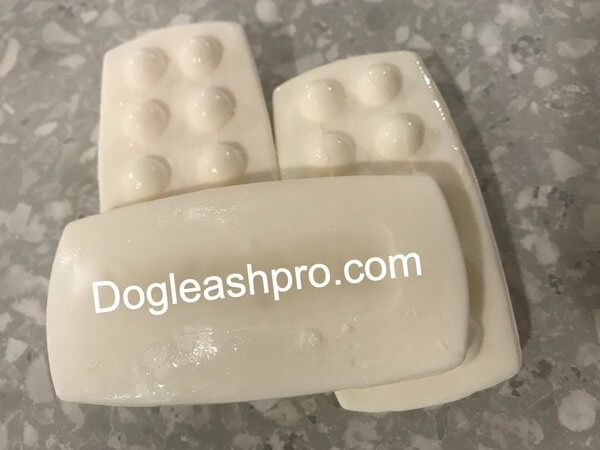
If you’ve run out of baking soda and cornstarch or flour, a bar of soap also works to stop a dog’s nail from bleeding.
Yes, you read that right. Soap can also stop the nail bleeding.
It is best to use a natural fragrance-free antibacterial soap. It acts as a plug and clots up the blood. Unscented soap does not contain alcohol and avoids any allergic reaction.
Wet the bar of soap so it softens and is not rock hard. Then, gently glide the bleeding nail across the bar to pick up some soap. If you need to, use your finger to direct the soap where you want it to go.
Another way is to break off a small piece of soap. Soften it with water and wrap it around your dog’s nail with a clean bandage.
Note that this technique is best for light bleeding. It’s not for serious injuries or heavy bleeding.
5. Cyanoacrylate Adhesives Super Glue
Yes, super glue. But not the one you keep in your tool box!
The super glue we’re talking about is called skin glue or surgical glue. This super glue uses cyanoacrylate adhesives which is often referred to as instant adhesives.
Using super glue sounds unorthodox, but it’s a relatively safe method for dogs as long as it’s not consumed. They are less toxic than the ones you find in your toolbox. Skin glue also has plasticizers to make them more flexible.
Dab a small amount of clear glue to your dog’s nail. Hold your dog’s paw for a few minutes. This prevents your dog from licking it before it dries. The skin glue dries quickly and hardens enough to stop the bleeding.
After a few days, the glue will fall off naturally once the your dog’s nail starts to heal.
6. Wrap in Bandages and Wear Protective Dog Boot
If you’ve tried everything and the dog nail is still bleeding, try wrapping the dog nail in bandages. This will help clot the blood and keep the pressure on the nail. Wrapping the wounded nail in bandages also prevents the dog from licking her wound and making it worse.
To wrap the wounded nail, begin by wrapping above the dog’s ankle so the bandage doesn’t fall off or loosen. To prevent your dog from licking at the wound, consider taping the wrap for extra support.
If you don’t have bandages, a clean sock also works as well. Slip the tube sock over the dog paw until it fits snugly. Then tape the tube part of the sock to the ankle so it doesn’t fall off.
Alternatively, you could have your dog wear a protective dog boot. The dog boot ensures that there is no pressure on the paw when your dog walks on it and this also prevents the stimulation of more blood flow.
How to Find the Quick on Black Dog Nails
Before trimming the dog’s nail, identify where the quick begins. Every dog’s nail has a quick. It is the cuticle-like part in the center that has nerve endings and blood vessels. Essentially the doggie version of a human’s nail bed.
Since the quick is filled with blood vessels, nerve endings, skin tissues, and connective tissues, it is very sensitive. Accidentally cutting into it will cause a lot of bleeding and your dog will start yelping loudly!
It’s easier to spot the quick when dogs have lighter opaque or white nails. You’ll see a pink quick. Avoid trimming too close to the quick. If your dogs have black nails, spotting the quick can be challenging. Until you start trimming, you won’t be able to see the quick.
Whether your dog has white lighter nails or black nails, we highly recommend using a dog nail grinder to prevent accidentally clipping into the quick. Although it takes longer to trim your dog’s nail this way, it’s the best bet to avoid cutting into the quick.
Using the nail grinder trims the nail slowly and the whisper-quiet motor is not only quiet but also accurate. Many pet owners prefer this method over using a dog nail clipper because it doesn’t startle their dogs.
After every trim, take a look inside the nail. If you see a whitish-gray dot in the middle of the nail, that is the quick. If the whitish-gray spot becomes more apparent, then you are getting close to the quick. Using the Casfuy dog nail grinder will help to slowly and accurately shave down the nail.
So, How to stop a dog’s nail from bleeding?
By using either one of these methods above, it can help make the dog nail trimming process less stressful and easier. Preparation is key. Before you sit down to trim your dog’s nails, have either the styptic powder or styptic pencils on hand.
If you prefer natural remedies like a natural fragrance-free antibacterial bar soap, baking soda, cornstarch, or flour, that’s fine too.
Any of these methods will work fine. It’s important to note that it is normal to accidentally cut into the quick as it happens to every owner (even grooming professionals) at least once.
A helpful tip would be to keep a dog nail trimming schedule on your phone or calendar for every other week. This way, the regular nail trimming prevents the dog’s nails and quick from growing too long. At our house, we trim our dog’s nails every two weeks to prevent our pup’s nails from growing too long and curling under their paws.
In Conclusion
It’s important to trim your dog’s nails frequently to maintain a short quick. When a dog’s nail grows, the quick also grows with it. Thus the longer the nail, the longer the quick, and the chances of cutting into the quick is high.
The key is to stay on top of trimming your dog’s nails to prevent any serious medical issue. But accidents do happen from time to time. It’s inevitable. If it’s hasn’t happened already, there’s a good chance your dog’s nail will bleed at some point during nail trimming.
As a responsible pet owner, you now have six simple ways to quickly stop your dog’s nail from bleeding. With these tips and tricks, your furry friends will be on their way to recovery and feeling much relieved!

With over five years of specialized experience as an animal writer, my expertise lies in dog nutrition, health, behavior, grooming, and training. I am dedicated to delivering helpful and informative content that caters to the well-being of our furry friends. My primary goal is to empower pet owners with knowledge and ensure our canine companions thrive in health and happiness. In my free time, I love volunteering at local dog rescue centers.


